Last year was full of great change, growth, and milestones in the social communication space. We saw Twitter and Facebook reach their 500 million and one billion user mark, respectively. Instagram and Pinterest grew exponentially and dozens of new, innovative platforms were launched. LinkedIn's addition of endorsements to their profile pages, coupled with a new iPad app helped them to reach over 200 million users. MySpace even set the stage for a comeback. Most importantly, businesses began recognizing the social space as a place for two-way communication, not just a type of media. I have identified a few important trends for businesses to watch as we move into 2013.
Memorable Customer Service
In a recent Nielsen study, one in three people admitted that they prefer social media for customer service rather than the telephone. This figure will continue to rise in 2013, as more and more companies realize the loyalty-building power of social communication. When consumers are pleased with a company's customer service, they will tell 15 people on average, compared to 24 people when they had a bad experience. Not only is good customer service important, it must be timely. According to a study conducted by Oracle, 50% of consumers give a brand only one week to respond to a questionbefore they stop doing business with them. An overwhelming 89 percent of consumers reported switching to a competitor after a poor customer service experience.
Additionally, customers aren't just on Facebook and Twitter anymore. Users are becoming fatigued and overwhelmed by social media and therefore are turning to smaller, more niche networks. In 2013, savvy brands will understand how to interact and connect with users on platforms like Instagram, Tumblr, Polyvore, and Reddit, to name a few.
Brands are going to need to refine their customer service social strategy in order to compete with brands such as UPS, Nike and Amex who are excelling on this front. Being successful with social media customer service requires that companies hire the right people, train them well, and make sure they aren't only experts in social communication, but also customer service. By providing memorable social media customer service, companies not only create deeper connections with consumers, but they glean valuable insights on how to improve their products or services. Social communication tools make it possible to garner high-volume, instant feedback from the desired audience. Before social communication, information like this came in the form of a costly research study, which was usually obsolete once published.
Social Power in the Hands of the People
We are living in a post-Instagram backlash world. Last year, we saw a notable power shift from the platforms to the users. Instagram users rebelled when the network announced a change in its privacy policy, which led many to believe their photos would be sold to advertisers without their permission and without compensation. Some say this announcement, paired with the ensuing controversy, cost Instagram 25 percent of their daily users. Although some critics call this number an exaggeration, one thing is clear. Instagram lost enough users to cause them to reinstate their original policy.
Other networks like Path and Facebook have had similar run-ins with angry (virtual) mobs because of controversial and unpopular policy changes. Both networks listened to their user base and amended their contentious policies. Instances like this have created a precedent within the social space that will continue well into 2013. Consensus is the true authority. This year, brands must listen louder to meet the wants and needs of their users. If not, users will let the world know, and then go elsewhere.
Equal Opportunity Advertising
Social platforms continue to expand their offerings to businesses by allowing brands to customize how, when, where, and to whom they advertise. Last year, Facebook allowed Pages to promote individual posts, and continues to add to their advertising product inventory. This flexibility allows for experimentation from companies of all sizes.
Similarly, select small businesses are currently test-driving Twitter's 'Promoted Account' and 'Promoted Tweets' products, without having to shell out the typical $15,000 minimum-spend commitment. These products put more control in the hands of small business owners by letting them set their own budget and geo-target their advertising efforts. This will be a game-changer for Main Street-type businesses looking to get serious with Twitter.
Social for Charitable Causes
We'll continue to see more and more brands integrate social causes, charitable components and environmental issues as underlying themes to their campaigns and messaging. Humans connect with humans after all, and brands are using this as a point of connection to engage with their audience, especially charity-minded Generation Y. During the People's Choice Awards, Walgreens announced it would donate $1 for every new like to Easton High School, up to $100,000. In doing so, they gained thousands of new followers and the respect of many customers.
This trend has fueled the creation of a few recently launched apps and tools that simplify the process of making charitable donations through social platforms. Chirpify is one example. It helps raise funds and make donations right through Twitter and Instagram. Another donation-based app is Instead, which encourages "micro-donations". The user decides what small thing to sacrifice (morning latte, for example) and donates the money to the non-profit of his/her choice.
Targeted Social Advertising
With recent updates on Facebook and Twitter, as well as new targeting features, businesses can now really dial-in their ads to reach a very specific target audience based on interests, education, etc. According to the same Nielsen study, 33 percent of people think social media ads are more annoying than other online ads. Therefore, taking advantage of targeting tools is going to be vital for ads to perform well.
To maximize RevPAF (Revenue Per Available Fan and Follower) brands need to get creative in their approach and make sure they are offering value. Facebook recently announced that in April it will introduce video ads in user's newsfeeds. The ads will play automatically, and may or may not include a mute option. Social-savvy brands will blend seamlessly into the social space and user's newsfeed by providing more valuable content. Otherwise, they risk being ignored by the consumer for being too overt in their sales pitch.
